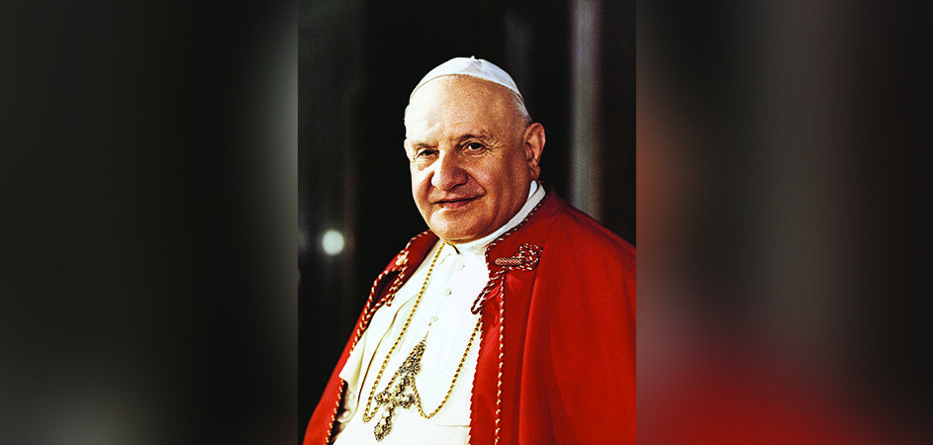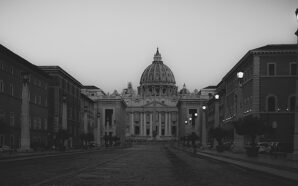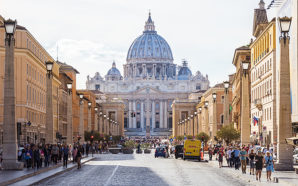John XXIII died on June 3, 1963. What has happened to the Church he left behind?
There is probably no pope in all of history — certainly not in the last 400 some years — who served so briefly as Bishop of Rome and yet had such an immense impact on the Catholic Church as John XXIII.
[That’s leaving aside Sixtus V. He’s the hard-nosed pope who, in just five years (1585-1590), created the Roman Curia that still exists today in only slightly modified form, and the one who totally transformed the city of Rome. But why digress?]
Angelo Giuseppe Roncalli was elected to the Chair of Peter on October 28, 1958 and died less than five years later on June 3, 1963. His lasting legacy can be summed up in three words: Second Vatican Council.
John was already 77 years old and just three months into his short pontificate when he announced plans to hold the Council, catching many of the Church’s cardinals and Vatican officials completely off guard. The Good Pope, as many called him, got the conciliar ball rolling but he only lived long enough to open the first of what would eventually be the Four Sessions of Vatican II. He did that on October 11, 1962, a day that has been hailed as one of the most momentous in the modern history of Christianity. And then, eight months later, he was gone.
An inspiration of the Holy Spirit
Pope John, who was beatified during the Great Jubilee of 2000 and officially declared a saint in 2014, did not change the Church dramatically during his four years and eight months as Supreme Pontiff. That is, he did not make any significant modifications to Church practice or structures, even if he did strike a new and refreshing tone for Catholicism the world over. Rather, it was the Council that he convened — through an inspiration of the Holy Spirit, he said — that began a process of reform in the Church more significant than anything since the 16th century Council of Trent. John’s process, which Paul VI tried in various ways to continue during his 15-year-long pontificate (not always successfully), was brought to port at some point during the long reign of John Paul II.
There is no doubt that Pope Francis is trying to revive the Vatican II project of reform that John XXIII set in motion. But sixty years after the Italian pope’s death, some wonder if it might be too late. The fervor to give new life to a more dynamic sort of “People’s Church”, as the late Vatican II enthusiast and chronicler Robert Blair Kaiser called it, is nowhere near as alive today as it was even twenty-five or thirty years ago.
The current pope’s audacious gamble to make synodality (all the baptized — clergy and laity — “walking together”) a constitutive part of the Church’s very nature and reason for being has aroused great interest. But that interest is found mainly among older Catholics — the so-called “Vatican II generation”. That’s not to say that no young people have been involved in Francis’ project. It’s just that, compared to those over the age of 60, they are in the minority. To put this generational gap into context, consider that there is only one man alive today who was a bishop at the time of John’s death. He’s 101-year-old José de Jesús Sahagún de la Parra of Mexico.
The temptation to turn back
It’s no secret that the Catholic Church — like all the mainline Christian Churches and communities — is experiencing a drop in membership, a crisis in leadership, deep ideological divisions, and uncertainty about how to best carry out its “missionary” or “evangelizing” presence in our rapidly and frighteningly changing societies. So much has happened in the world and the Church during these 60 years since Pope John died that it’s tempting to long for the good old days before everything became so uncertain, complicated, unraveled. And, honestly, going backwards is not only the temptation of traditionalist Catholics. The co-called reform-minded types also tend, at times, to want to return to the old debates of the post-Vatican II period that they ended up on the wrong side of and fight them all over again.
Meanwhile, the young people…. where are they? Again, it’s not like there are no longer any Catholics under the age of 50 or 60. But they are fewer and fewer in number. That goes for those involved in the traditionalist groups in the Church, as well, which are just more clever and adroit than the “progressives” at marketing themselves as thriving communities, especially on social media. But attempts to recapture or recreate a bygone era almost always end up badly. There is no going back — not to the halcyon days of the 1960s Council nor the “golden age” of Catholicism that preceded it.
A prophet in his time
The God of history moves us forward. Always. Just read the history of salvation in the Hebrew scriptures, especially the story of the Exodus. God freed the Israelites from their captivity in Egypt and led them into the desert. There they would wander for 40 years before finally reaching the land God promised them. All the while they defied God and tried to find ways to turn back. They did not trust in God’s Word as it was spoken through the prophets, Moses chief among them.
Many believe that John XXIII was also a prophet in his time. He was prompted by the Holy Spirit to move the Church forward just as the world — the one that “God so loved…” and still loves — was also moving forward. But moving forward means we cannot take everything with us on the journey, only that which is essential, useful, and faithful to the mission. We must let go of many things (including structures, procedures, attitudes) that are collapsing, dying, and are no longer relevant. Yes, the journey the Church has been on these past six decades has been extremely rough and very uncertain at times. We’ve stopped probably more times than we would like to admit. And we’ve even turned back. But this is all part of the plan of God, in the presence and workings of the Holy Spirit.
So as we remember Pope John with gratitude on the 60th anniversary of his death, let us also give thanks and lend a helping hand to Pope Francis who is trying to move us forward once more. “Saint John XXIII, pray for your Jesuit successor, and pray for the Church you served so faithfully.”
Reproduced with permission from La Croix International.








